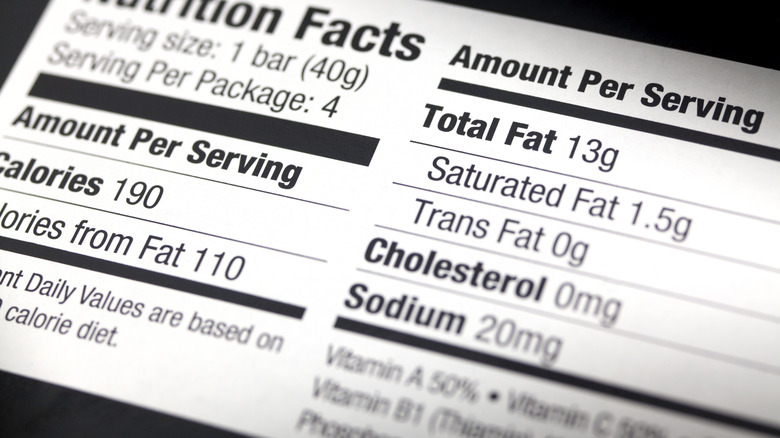How The FDA Might Be Changing Nutrition Labels In A Major Way
Your food's nutrition label could soon see some big changes, at least if the FDA has its way. The United States Food and Drug Administration has just proposed the requirement of a new, front-of-package nutrition label for packaged food items. The new labels will inform consumers of a food item's sodium, saturated fat, and added sugar content. This is in attempt push back against the United States' high rates of chronic illness.
These nutrients are directly linked to chronic illnesses such as diabetes, cancer, and heart disease when consumed in excess. The new labels will be placed on the front of food items, and will also categorize these items as being "Low," "Med," or "High" in saturated fat, sugar, and sodium. This will allow consumers easy access to nutritional information and might make it easier for consumers to assess whether an item fits their particular nutritional needs.
According to the National Institutes of Health, about half of Americans suffer from a chronic illness. Many chronic illnesses, such as diabetes, heart disease, and cancer are linked to foods high in sugar, saturated fat, or sodium. According to FDA Commissioner Robert M. Califf, M.D., "the science on saturated fat, sodium and added sugars is clear." He continued, noting that "it is time we make it easier for consumers to glance, grab and go. Adding front-of-package nutrition labeling to most packaged foods would do that."
A clearer picture or just more noise?
As to whether these labels will impact consumer habits, the answer is more complicated than a simple yes or no. Research has shown that similar labeling practices in other countries have helped influence consumer habits. However, there is some question as to whether Americans will follow suit. Additionally, there is some question as to whether the labels may prove to be confusing for some consumers.
After all, the new labels don't paint the whole nutritional picture, and labeling items as "high" or "low" in certain areas can lead to incorrect nutritional assessments on the part of consumers. And, as it is, there are plenty of confusing and misleading labeling practices on grocery items, and there is plenty of food misinformation to go around. We'll just have to wait and see if the new proposed labels help to clear things up.

